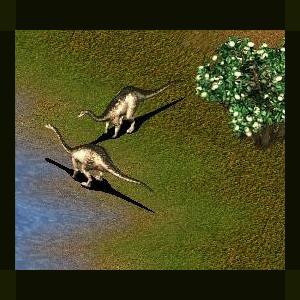About This File
Lufengosaurus
Lufengosaurus, (, meaning "Lufeng Lizard"), was a prosauropod dinosaur which lived during the Early Jurassic period in what is now southwestern China. At about 6 metres (20 ft) long, it was the first complete dinosaur skeleton mounted in China and a commemorative postage stamp was issued in 1958 to celebrate the event.
Named by C.C. Young in 1941, remains of the type species, L. huenei, were found in the Lower Lufeng Formation (Lower Jurassic) of Yunnan Province in China. A second species was named by Young a few years later. L. magnus was, as its name suggests, a significantly (up to 1/3rd) larger creature than L. huenei. Lufengosaurus is still found in Bajocian stage deposits of China, making it one of the few "prosauropod" genera to survive into the Middle Jurassic.
In 1981, Cooper suggested Lufengosaurus and Yunnanosaurus were species of the South African genus Massospondylus. However, a recent reanalysis of the skull of Lufengosaurus huenei establishes it as a distinct genus separate from either Massospondylus or Yunnanosaurus.
Like all prosauropods, Lufengosaurus had much longer hindlimbs than forelimbs and was probably bipedal some of the time, especially when browsing for food. It was herbivorous, although it had sharp claws (with an especially large thumb claw) and teeth. These features have been used to support claims that Lufengosaurus may have been at least partially omnivorous, but the sharp teeth witnessed in Lufengosaurus and other prosauropods are similar to those seen in iguanaian lizards - which are herbivorous.Alternatively, the claws may have been used for defense or raking foliage from trees.



Recommended Comments
There are no comments to display.
Create an account or sign in to comment
You need to be a member in order to leave a comment
Create an account
Sign up for a new account in our community. It's easy!
Register a new accountSign in
Already have an account? Sign in here.
Sign In Now